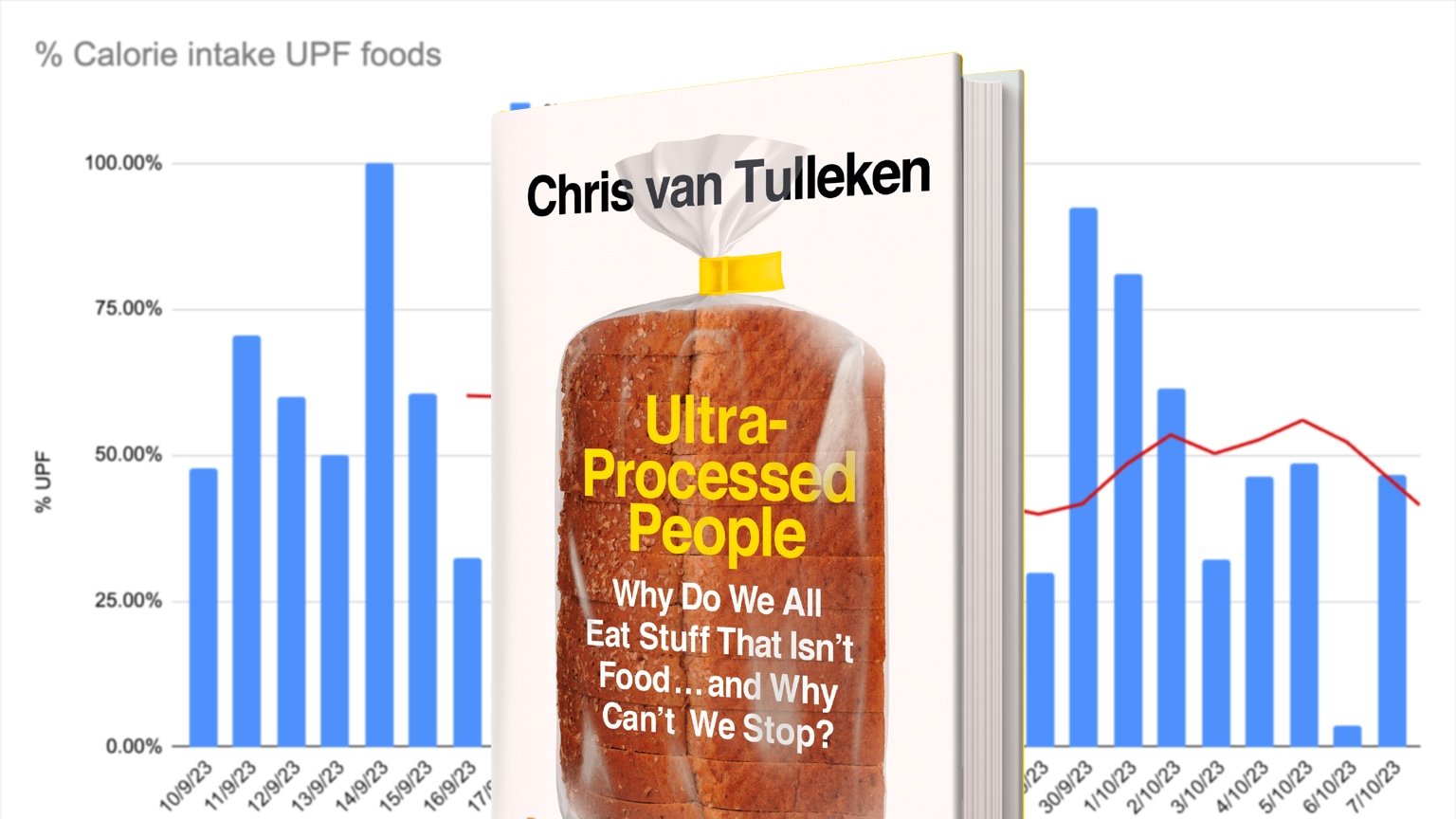I Tracked My Ultra-Processed Food Intake for 4 Weeks, While Reading Chris van Tulleken’s Book. This Is What Surprised Me.
Most Popular Calculators

Chris van Tulleken’s Sunday Times bestseller book Ultra-Processed People is an eye-opening read. The book investigates the modern, industrial food system and how our diets have changed dramatically since the 1950s.
Ultra-Processed People asks what impact this modern diet is having on our health and society, particularly whether it is ultra-processed foods that are driving the global obesity epidemic.
A key concept in the book is the NOVA classification system, which is used a tool to understand whether foods in a diet are ultra-processed or not. The system groups foods according to the following definition:
- Unprocessed and minimally processed foods – Foods in their natural state, or have been washed, dried, frozen or pasteurized. For example: Fruits, vegetables, nuts, seeds, meats.
- Processed culinary ingredients – Foods you’ll find in a kitchen to season and cook with. Might be refined. For example: oils, butter, sugar, salt.
- Processed foods – Foods that have altered from their natural state, including by smoking, curing, fermenting. For example: canned vegetables, cheese, etc.
- Ultra-processed foods – Industrially-made foods containing many ingredients. Typically ready to eat, like frozen meals, soft drinks and snacks like crisps and cookies.
Tracking Ultra-Processed Calories
As I read through Chris’s book, it so-happened I had been tracking my calories in MyFitnessPal for the past month or so. This meant I had my own dataset about exactly what foods and drinks I was consuming, and how many calories each had.
I exported the data into Google Sheets, and spent an hour or so classifying my foods into ultra-processed (UPF) or not ultra-processed (non-UPF). The first thing I learned is that there’s a lot of nuance when it comes to deciding if a food is UPF or not. For example, on one day I had frozen chips with these ingredients:
INGREDIENTS: Potato (95%), Rapeseed Oil, Dextrose.
I think, on the face of it, the presence of dextrose makes this ultra-processed. But I decided to classify it as non-UPF, since the ingredients list is fairly minimal (particularly when compared to other brands) and I’m not too concerned about dextrose (perhaps I should be?)
The Data
And here’s the chart showing 4 weeks of calorie intake. The blue bars on this chart show % UPF on each day, and the red line is a 7-day moving average.

Lesson 1 – I’m about average
Chris mentions in the book that about 60% of calories in the UK and USA diet come from ultra-processed foods, referencing a 2018 study. My average for the first week of this data comes out exactly at 60%!
Lesson 2 – I’m not consistent
Something I found really surprising is the amount of variance in my UPF intake day by day. On one day over the 4 weeks, my UPF intake was just 4%. But there was also a day where I ate 100% UPF. On days where my % UPF was low, I would feel good about what I was eating, but I wasn’t consistent in my diet.
Days that were high in UPF tended to be days where I had less control of my diet, for example on weekends where I was eating out or snacking during long drives. Days where I ate entirely at home tended to be lower in UPF.
Lesson 3 – My UPF intake reduced after reading the book
While reading the book, I started to be more conscious about what foods I was buying and what meals I was eating. I did make some simple changes to my diet, and invested in a bread maker to make bread at home.
Whereas my first week averaged 60% UPF, the final week’s read was 46%, a 14 percentage-points reduction. Even after reading the book, I am not aiming to eliminate UPF from my diet, but I would like to reduce it somewhat, so I’m happy with this progress.
Lesson 4 – Much of my UPF intake comes from a few foods
This is probably no surprise as UPF foods tend to be energy dense. But, when I looked at my non-UPF foods, there was a huge diversity in what I was eating. For my UPF foods though, most of the calories came from a handful of foods.
Although Huel is billed as a healthy, nutritionally-complete food (and I’m not debating whether it is or isn’t), it is undoubtedly an ultra-processed food. I’ve been eating Huel almost every day through the 4 weeks, as it’s a convenient and quick-to-make food for breakfast or lunch. But it does contribute 400 calories each day to my UPF intake.
The second biggest source was bread (supermarket loafs, naan breads and others). Bread makes up a large part of most of our diets, but there’s a big difference in how pre-packaged loafs are made compared to fresh bread made daily. Again, this is a matter of convenience, but it’s also one that can be easily avoided at home.
Ketchup is another frequent source of UPF calories, coming in at 40 calories a squirt, but I won’t be giving this up anytime soon!
References
Baraldi, L. G., Steele, E. M., Canella, D. S., & Monteiro, C. A. (2018). Consumption of ultra-processed foods and associated sociodemographic factors in the USA between 2007 and 2012: evidence from a nationally representative cross-sectional study. BMJ open, 8(3), e020574.

